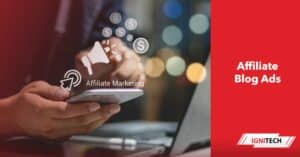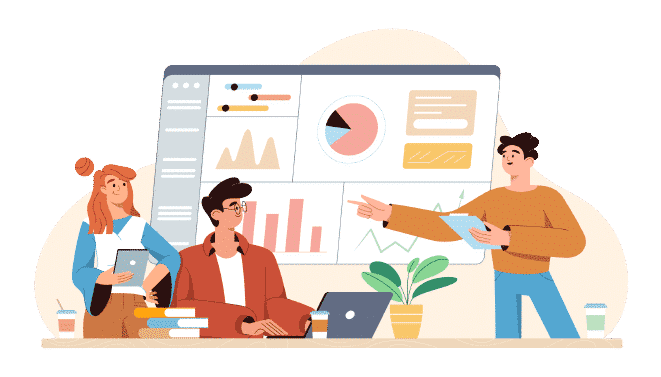Key Takeaways
| Question | Answer |
|---|---|
| What are Sponsored Facebook Posts? | Posts businesses pay for to appear in Facebook users’ feeds, even if they don’t follow the business. |
| How do businesses pay for them? | Primarily through an auction system where they bid against other businesses for ad space. Cost varies based on targeting, competition, and ad quality. |
| What factors affect the cost? | Audience size, ad placement, ad format, bidding strategy, and ad quality all influence how much sponsored facebook posts cost. |
| How do businesses measure success? | Businesses track metrics like reach, engagement (likes, comments, shares), website clicks, and conversions (sales, leads). |
| What’s a good budget? | The optimal budget depends on business goals and target audience. Starting small and testing different strategies is advisable. |
| Can I boost a regular post instead? | Boosting is a simpler form of advertising, suitable for quick reach. Sponsored facebook posts with Facebook Ads Manager offer more precise targeting and control. |
Introduction
Facebook, a platform used by billions globally, provides opportunities for businesses to reach potential customers. A primary method for achieving this is through sponsored facebook posts. These aren’t simply organic posts appearing in newsfeeds; they’re paid placements designed to extend a business’s reach beyond its existing followers. Understanding how this system functions – specifically, how and why businesses pay for these posts – is crucial for anyone involved in marketing or managing a business presence on the platform.
This article will explain the mechanics behind paid promotion on Facebook, detailing the factors that influence cost, and how businesses determine if their investment delivers returns. It aims to provide a complete understanding of the payment structure for Facebook advertising, translating potentially complex concepts into easily understandable terms.
Understanding the Facebook Advertising Auction
At its core, Facebook advertising operates through an auction system. Think of it like an auction for attention. Businesses tell Facebook who they want to show their ad to – their target audience – and how much they’re willing to spend to reach them. Facebook then uses this information, alongside other factors, to determine which ads get displayed and to whom.
Here’s how it works:
- Ad Creation: A business creates an advertisement, specifying details like visuals, text, and a call to action (e.g., “Shop Now,” “Learn More”).
- Target Audience Definition: The business defines its ideal customer using Facebook’s extensive targeting options (location, age, interests, behaviors, etc.).
- Bidding: The business sets a bid, indicating the maximum amount they’re willing to pay for a specific outcome (e.g., 1,000 impressions, a click on their ad).
- Auction Process: When a Facebook user opens their newsfeed, Facebook’s ad auction system runs in milliseconds. It considers bids from various advertisers competing for the same audience.
- Ad Placement: Facebook selects the winning ads based on a complex algorithm. The winning ads are displayed to users who match the defined target audience.
It’s not solely about the highest bid. Facebook’s algorithm considers multiple factors – a concept referred to as “ad relevancy” – during the auction process. A highly relevant ad, even with a slightly lower bid, can win over a less relevant ad with a higher bid.
Factors Influencing the Cost of Sponsored Facebook Posts
Several elements contribute to the overall cost of sponsored facebook posts. Understanding these factors allows businesses to make informed decisions about their advertising strategies and budget allocation.
1. Audience Size and Targeting
The size of your target audience significantly influences the cost. A broader audience means more competition, driving up prices. Narrowing your focus to a highly specific audience may reduce competition but can also limit your reach.
Start with a relatively broad audience and use Facebook’s ‘Detailed Targeting Expansion’ feature. This allows Facebook to show your ad to people similar to your primary target if it improves performance at a lower cost.
2. Ad Placement
Facebook offers various ad placements:
- Facebook Feed: The typical newsfeed ad. Usually most valuable and therefore more expensive.
- Instagram Feed: Ads displayed in Instagram’s main feed.
- Facebook Marketplace: Ads shown within the Marketplace.
- Facebook Stories & Instagram Stories: Full-screen, vertical ads. These can be cost-effective for visually appealing products.
- Audience Network: Ads displayed on websites and apps outside of Facebook. Generally the least expensive option, but may have lower engagement.
Different placements have varying costs based on demand and user engagement.
3. Ad Format
The type of ad creative you use impacts cost:
- Image Ads: Simple and often less expensive.
- Video Ads: Generally more engaging, but can be more costly to produce.
- Carousel Ads: Show multiple images or videos in a single ad.
- Collection Ads: Feature a catalog-like experience, suitable for e-commerce.
- Instant Experience Ads: Full-screen, mobile-optimized experiences.
More engaging and visually appealing formats often command higher prices.
4. Bidding Strategy
Facebook offers several bidding strategies:
- Lowest Cost: Facebook automatically bids to get the most results for your budget. Suitable for beginners.
- Cost Cap: You set a target cost per result, and Facebook aims to stay below that amount.
- Bid Cap: You set a maximum bid amount for each auction.
- Target Cost: You set a target cost per result that you want to achieve.
- Value Optimization: Bids automatically to get the highest conversion value for your budget.
Choosing the right strategy depends on your business goals and comfort level.
5. Ad Quality and Relevance
Facebook rewards high-quality, relevant ads. A “Quality Ranking” is assigned to each ad based on factors like expected engagement, ad relevance to the audience, and ad quality score. Higher quality rankings lead to lower costs and better ad delivery.
Focus on creating compelling visuals, writing clear and concise ad copy, and ensuring your landing page matches the ad’s message.
Payment Models & Budget Options
Facebook offers flexible payment options to suit various budgets:
- Daily Budget: Sets the average amount you’ll spend per day.
- Lifetime Budget: Sets the total amount you’ll spend over the entire duration of the ad campaign.
You only pay when people take a desired action, though this is dependent on your chosen bidding setup. These actions can include:
- Impressions: The number of times your ad is shown.
- Reach: The number of unique people who saw your ad.
- Link Clicks: The number of times people clicked on a link in your ad.
- Landing Page Views: The number of times people loaded your destination webpage.
- Conversions: Actions taken on your website, such as purchases or form submissions (requires Facebook Pixel setup).
Payment is typically handled through a connected credit card or PayPal account. Facebook bills you based on the total cost of your ads accumulated during a billing cycle.
Measuring the Success of Sponsored Facebook Posts
Simply running sponsored facebook posts isn’t enough. Businesses need to track key metrics to determine if their advertising is effective.
- Reach & Impressions: Measure brand awareness.
- Engagement (Likes, Comments, Shares): Indicate audience interest and interaction.
- Click-Through Rate (CTR): The percentage of people who saw your ad and clicked on it. A higher CTR suggests your ad is relevant and appealing.
- Cost Per Click (CPC): The amount you pay for each click on your ad.
- Conversion Rate: The percentage of people who clicked on your ad and completed a desired action (purchase, lead form submission, etc.).
- Return on Ad Spend (ROAS): The revenue generated for every dollar spent on advertising.
Boosting vs. Facebook Ads Manager: What’s the Difference?
Many users are aware of the ‘Boost Post’ button on Facebook. This is a simplified form of advertising, allowing you to promote an existing post to a wider audience. While convenient, boosting offers limited targeting options and control.
Facebook Ads Manager, on the other hand, is a more powerful platform for creating and managing sponsored facebook posts. It provides:
- Advanced Targeting: Detailed demographic, interest, and behavioral targeting.
- Custom Audiences: Target people who have previously interacted with your business (website visitors, email subscribers).
- Detailed Reporting: Comprehensive data on ad performance.
- A/B Testing: Experiment with different ad variations to optimize results.
Conclusion
Sponsored facebook posts represent a valuable avenue for businesses to reach their target customers and drive results. While the payment system can seem complex, it fundamentally operates on an auction basis influenced by factors such as audience targeting, ad quality, and bidding strategies. By understanding these dynamics, businesses can optimize their campaigns, allocate budgets effectively, and ultimately maximize their return on investment. Consistent monitoring of key performance indicators and a willingness to adapt based on data are essential for sustained success. The key to effective advertising on Facebook isn’t just spending money; it’s spending it strategically.
 Youssef is passionate about crafting compelling and persuasive content and engaging online in social communities. With a knack for creative storytelling and a love for social media, he brings a fresh perspective to digital marketing. Youssef thrives in dynamic environments and enjoys the startup culture, where he can experiment and innovate.
Youssef is passionate about crafting compelling and persuasive content and engaging online in social communities. With a knack for creative storytelling and a love for social media, he brings a fresh perspective to digital marketing. Youssef thrives in dynamic environments and enjoys the startup culture, where he can experiment and innovate.












